A noise-canceling system is an active noise control system that listens to the surrounding ambient sounds and plays opposite sound in sync with the problem noise.
This has the effect of canceling out the problem noise.
Active noise canceling systems are used most commonly in cars (the Nissan Bluebird was the first to use it way back in 1992 but it didn’t catch on till more recently) and high-end headphones.
There are systems available for use in buildings from companies like Silentium – be aware that these are not cheap!
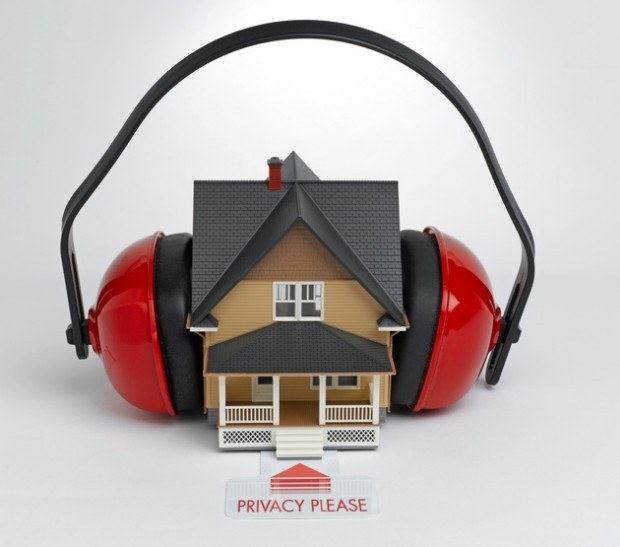
Many of these sorts of solutions are installed in or near where problem sound is coming from, for example, an active noise cancellation stove hood could be installed in a noisy kitchen to help compensate for things like extractor fan noise, garbage disposal unit noise and more.
This would have a microphone built into it that detects the noise, then the built-in speakers emit the inverse sound wave.
This is a very effective solution for low-level noise problems however as previously mentioned it can be extremely costly (particularly if you want to use a noise-canceling system throughout your home) however it won’t help with unpredictable sounds such as a noisy microwave or a plate crashing to the floor.
Whether or not you have the budget to implement an active noise cancellation system or not it is true that soundproofing your home is a great way of canceling noise.
If you do plan on getting an ANC system installed then soundproofing will make it far more effective – if you don’t use an ANC system then soundproofing may even make using one unnecessary, providing you do it well.
How To Build A Home Noise Cancelling System
Cancelling noise takes work…a lot of work, depending on the size of the problem. To prevent sound waves from entering your room completely you need to make it impossible for vibrations as well as air-borne sound to get into your home – this is far easier said than done!
Here are the steps you should take to cancel noise in your home:
1. Soundproof Your Doors
Doors are often poorly insulated and let a lot of sound through. Soundproofing your doors is a must for effective noise cancellation.
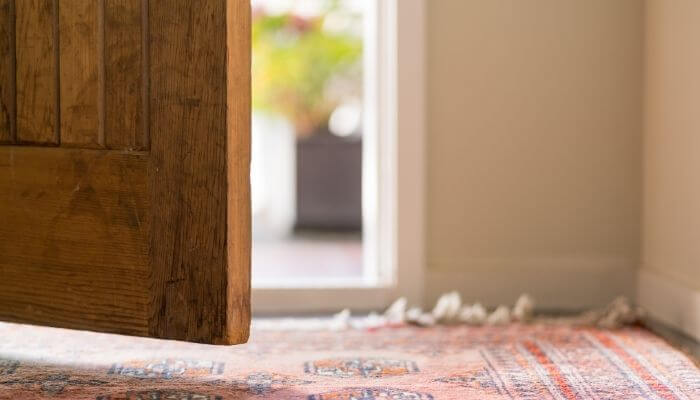
Our article on how to soundproof a door gives more details on the specifics of how to do it well, however some key points are:
- Use weather-stripping – weatherstripping is commonly used to prevent air and damp getting through eternal doors and windows however it also does a great job of sealing doors (and windows) and preventing sound from getting through. It is very easy to install, simply pull off the sticky back tape and fit in inside your door frame so that when the door closes it is tight against the weather stripping. This will help seal up the frame making it much harder for sound to get in around your door.
- Install a door sweep – typically most doors often have some sort of a gap at the bottom of them. This can be a big problem for letting sound in. Door sweeps are like a brush which fits to the inside of your door and sweeps the floor as it closes. The purpose is to seal up the gap at the bottom of the door by filling the gap between the door and the floor.
- Use an acoustic threshold – Acoustic thresholds will further help seal up the gap between the door and the floor. They feature a raised lip which the door sits against when closed sealing the gap. Be aware that these are not suitable for homes where elderly or partially sighted people live as the raised lip can be a trip hazard.
- Get a thicker door – many modern doors are very flimsy (particularly internal doors), often the internal part of your door is made from a cardboard lattice which doesn’t do much to deflect sound. Most internal doors are hollow and flimsy, providing little sound resistance. A dense wooden door will block a lot more sound because it does not have a hollow cavity for sound to reverberate around in.
2. Soundproof Your Windows
Windows can let a lot of sounds in, particularly if they are only single glazed. Ensuring that your window is well soundproofed will make a significant difference, particularly if the source of your noise problem is outside your home.
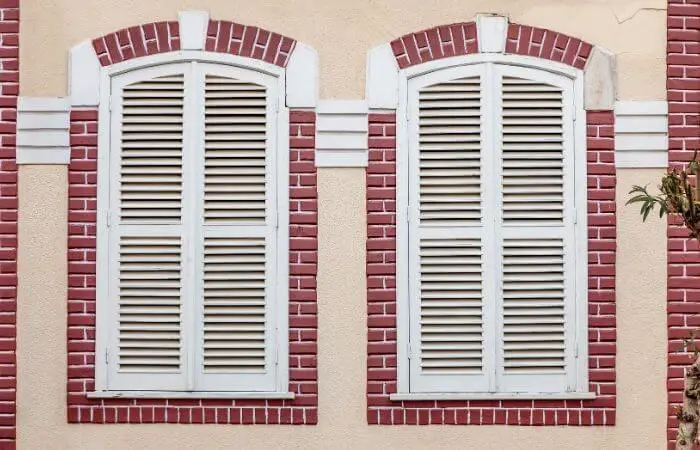
Read our article for a detailed guide on how to soundproof your windows. Some of the main points are:
- Make sure that your existing window frame is thoroughly sealed all the way around.
- Use acoustic sealant and insulation tape to seal any gaps and ensure your window is airtight.
- Add acrylic panels to your window to trap air and reduce the amount of sound vibrations getting through your window.
- Add sound deadening curtains and/or blinds to your window.
- Use weather stripping.
3. Soundproof Your Walls
A poorly insulated wall can make all of your soundproofing work completely ineffective so it is important that you ensure your walls aren’t letting your noise cancellation system down.
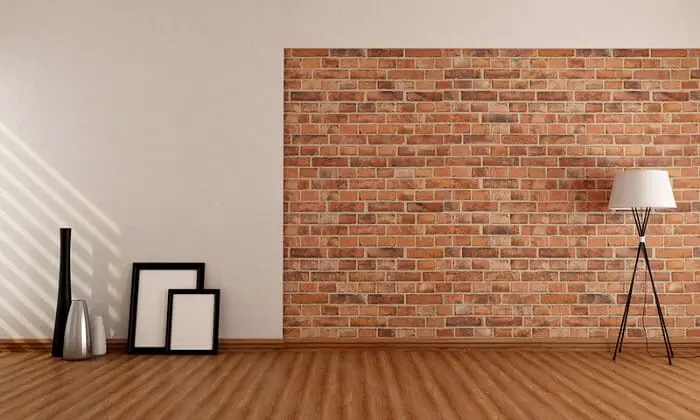
Internal stud walls are often poorly insulated whereas brick are usually less of an issue…however this isn’t always the case sometimes soundproofing a brick wall can be necessary.
Check out our detailed guide on how to soundproof a wall for more information.
Soundproofing a wall can be a big job so if you don’t feel like taking on a big D.I.Y project then hire a professional (get a quote here)…or you can try some cheap soundproofing methods which could make a difference.
The basics of soundproofing a stud wall are:
- Take off the plasterboard.
- Seal all wall openings with acoustic sealant.
- Fill the walls with Rockwool insulation.
- Fit resilient channels across the studs.
- Screw the drywall into the resilient channels.
- Add soundproofing board over the top of your plasterboard if needed for extra sound resistance (soundproofing board can also be used to good effect on brick walls).
4. Soundproof Your Ceiling & Floor
The increasing prevalence of apartment living means that floors and ceilings can be very problematic areas when it comes to soundproofing. Most apartments have concrete floors so air borne sound generally isn’t a problem however sound vibrations can be.
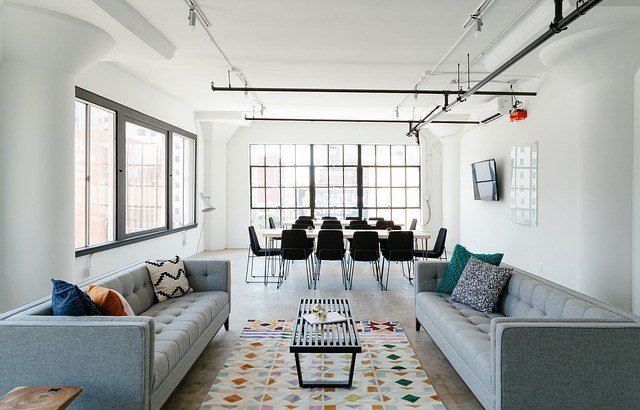
A heavy-footed upstairs neighbor can create serious sound vibrations when they jump out of bed in the morning or use their treadmill in the early morning!
If you can persuade your neighbor to put a few thick rugs down underneath his bed or any problem areas then this can make a big contribution towards soundproofing your apartment.
However if this is not the case then your best option for effective soundproofing is to create a false ceiling with resilient channels installed inside it to help dissipate the sound waves before they reach you.
Read our guide on how to soundproof a ceiling for information on how to do this.
If you live in a shared house then chances are your floors and ceilings aren’t concrete and instead consist of wooden floorboards with a cavity and then a plasterboard ceiling. Unfortunately, these sorts of ceilings are not particularly great at stopping sound.
Filling your ceiling cavity with Rockwool will make a big difference as this will stifle airborne sound and it will massively dampen any sound vibrations that travel through the ceiling joists.
5. Create Noise Barriers
Noise barriers are objects which are placed between you and the source of any problem noise.
For example, if your home suffers from traffic noise and you have the luxury of a garden then erecting a soundproof fence, planting a hedge or putting a shed in a strategic location can help to deflect noise away from your home. If done well this can make a big difference.

Even if you don’t have a garden or the source of your noise problem is from a neighboring flat you can still use noise barriers to your advantage.
If noise is coming in through a poorly insulated wall often putting a thick sofa, bookcase or cabinet in front of the wall can help dampen incoming sound waves and reduce the overall noise impact. This process is known as sound attenuation – it works by dissipating sound into heat.
If noise is coming in through a window or door strategically placing furniture in the line of the window will help to deflect the sound waves away from you helping to use up the sound energy more quickly.
While this method may not make a particularly noticeable difference on its own when combined with some of the other noise-canceling methods we have mentioned it can work very well.
Also Read:
What Is Sound Masking & How Does It Differ From White Noise?
7 Benefits Of Using White Noise
6. Try A White Noise Machine
If (like me) you can’t afford to invest in a purpose-built active noise cancellation system for your home then a good cheap alternative option is to use white (or pink or brown) noise.
White noise machines are a bit more clunky than an ANC machine, instead of playing the opposite noise, they play a generic noise for example TV static, running water or similar (there are countless options).
All of these are sounds which you will quickly tune out and not even notice while they drown out irritating background noises.
Hopefully, this guide has helped you work out what steps you need to take to turn your home from a noise polluted nightmare into a haven of peace and tranquility.
If you take on all of these jobs by yourself you will certainly have your work cut out for you, if you can pinpoint exactly where the source of your problem noise is and then take steps to deal specifically with that you can save yourself a lot of work and arrive at an effective solution very quickly.
As an Amazon Associate I may earn a small fee from qualifying purchases at no extra cost to you. This helps us run the site, so thanks for your support!